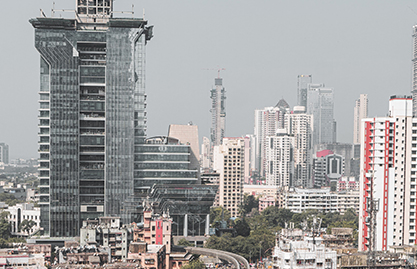Long term economic benefits of sustainable design
In modern Indian architecture, sustainable design can be defined as a concept of creating built structures that are socially, ecologically and economically viable and sustainable for present and future generations. Sustainable designs are not only beneficial in lowering the negative impacts on the environment but are also advantageous in terms of increased productivity and economic interests.
Some of the most significant economic benefits of eco-friendly designs are:
- Less Energy Usage and Low Operational Cost
- Higher Values for Builders
- Higher Returns
- More Job Opportunities
- Use of Modern Vernacular Architecture
- Government Incentives
One of the fundamentals that sustainable design architects apply is to lower energy consumption. By making use of daylight and creating a design that offers maximum cooling with air ventilation can significantly add up to saving energy costs. It has been noted that the installation of green technology in a building can save up to 25% to 50% of the energy. Less energy usage means a low operational cost for running a residential or commercial building. Saving on operational costs can allow installing more such methods leading to further energy and cost-saving.
Green buildings are slowly turning into a trend, and working or living in these buildings is becoming a vogue. The reason behind it is that it gives people a sense of responsibility, an opportunity to contribute to the fight against deteriorating environment and have a sustainable future while dwelling in modern Indian architecture. Since the cost of building eco-friendly establishments is upfront high and the trend & demand is slowly increasing, these buildings are rented and sold at a premium, giving more returns for sustainable design architects.
Useful Resources: Commercial Architects in Delhi | Best Residential Architects in Delhi
There is not just great value for the sustainable design architects and builders in constructing green properties but for the occupants as well. The people who opt for eco-friendly premises save a considerable amount while conserving energy and are also not much affected by the ever-increasing and fluctuating energy rates. Even the resale value of such properties is high. Such is the benefit of sustainable modern Indian architecture.
Constructing a sustainable building and making designs requires special talent. Sustainable design architects undergo specialized training and study various ways in which green buildings can be constructed. This creates job opportunities for specialized staff. Not only this, but the need for innovative sustainable technology creates new opportunities for manufacturers resulting in a demand for more skilled, semi-skilled and non-skilled labour.
One of the good features of sustainable architecture is that it does not rely on advanced materials for construction. It prefers utilizing the locally available or vernacular building material. This not only saves the cost of procuring material from far off but also help cater to the local requirement. This form of modern Indian architecture is called Modern Vernacular Architecture. It might have been forgotten lately but the idea of sustainable architecture has brought its benefits to light. The building material used is cheaper, hence saves a lot of cost, and blends modern ways with the traditional roots.
Read Also: Vernacularism in Hospitality Architecture
The Indian government has been supporting and has a solid foundation set to make India a sustainable building nation; IGBC (Indian Green Building Council) has been set up as a part of CII (Confederation of Indian Industries) to regulate and promote the concept of sustainable designs. Medium and small-scale projects rated by IGBC as ‘green building’ get financial support at concessional rates from financial institutes. This not only helps in saving the upfront cost but also inspires small and medium sustainable builders to be a part of this great initiative!








